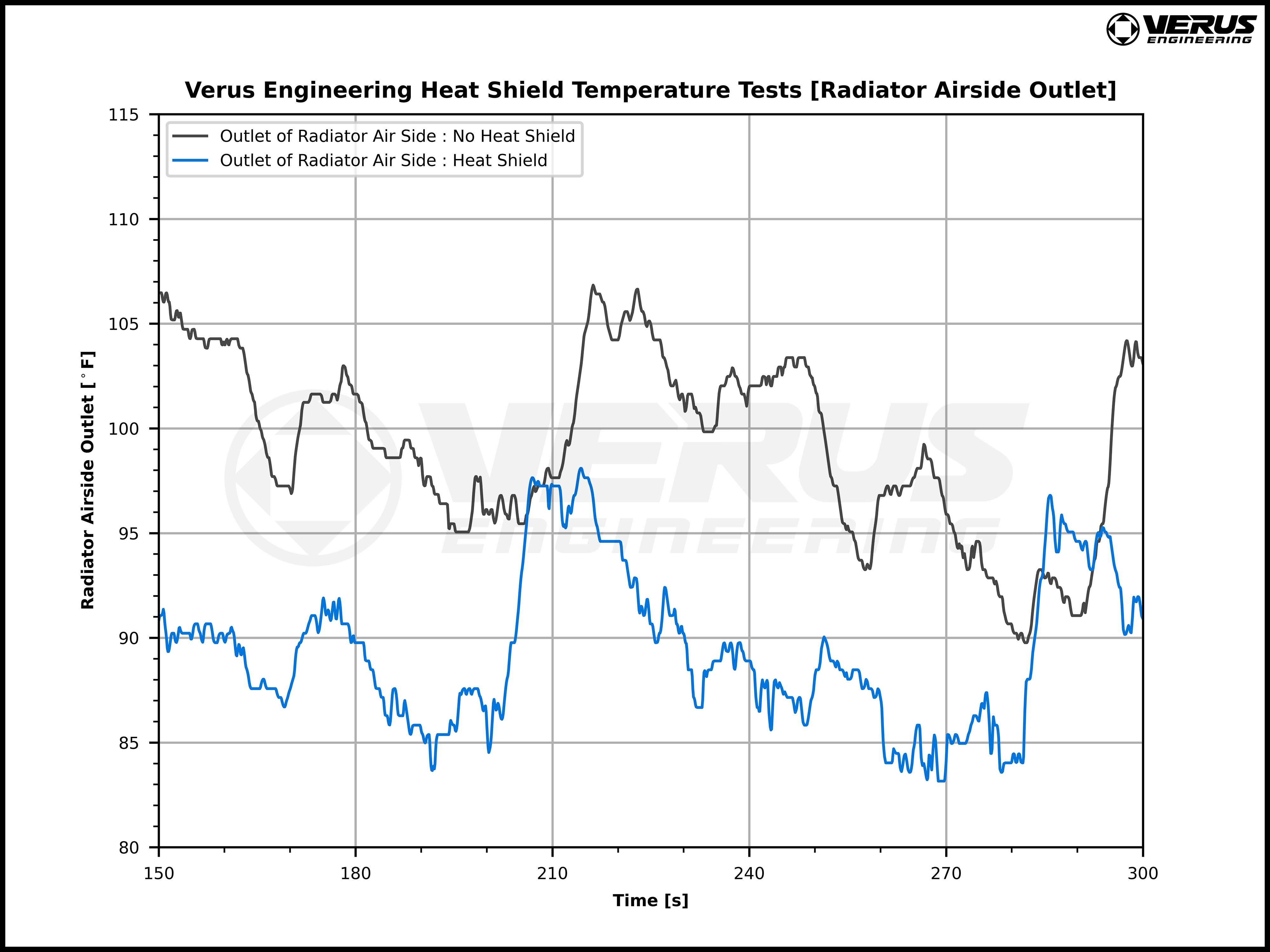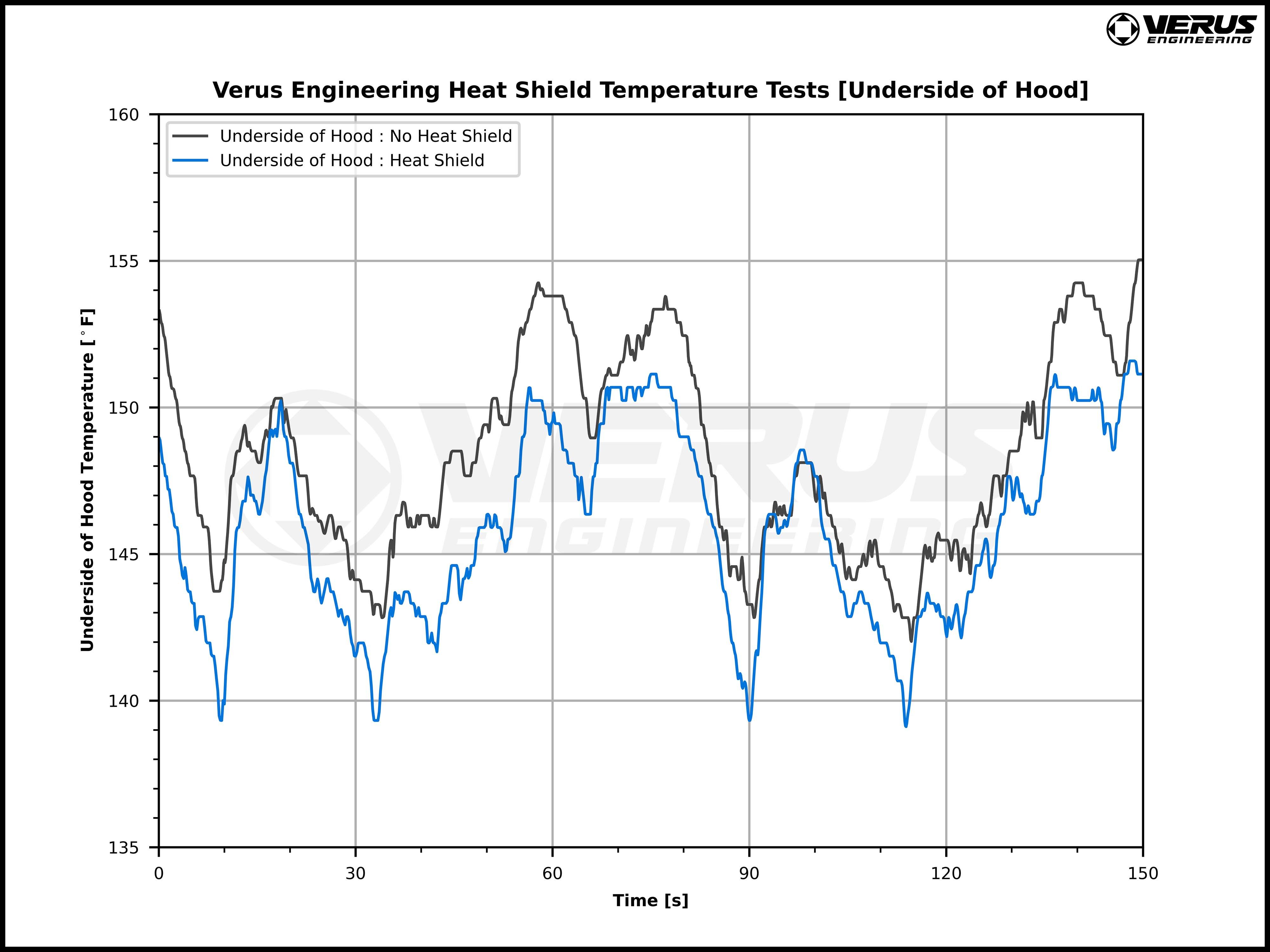SUMMARY: OVERALL TESTING DATA

The temperature data is taken from 4 consecutive laps around Putnam Park Road Course. We installed 4 thermocouples in the engine bay (see page 5) to capture this temperature data using the AIM EVO5 data acquisition system.
The testing was done on the same day, with the same driver, same ambient temperature, similar lap times, and no traffic on track.


SENSOR LOCATIONS

All of these locations are separate thermocouples connected to an AIM EVO5.
2) Turbo Heat Shield (Roughly 6" from Exhaust)
3) Outlet of Radiator Air Side
4) Underside of Hood
HEAT SHIELD TEST

Install of Heat Shield
INTAKE AIR TEMPERATURE


The temperature in the airbox [Intake Air Temperature] is around 0-3 degrees Fahrenheit lower with the Verus Engineering Hood Heat Shield. The turbo heat shield helps keep the higher temperatures contained to the area around the turbo and exhaust manifold, which helps drop the intake air temperature. However, this improvement seems to be temporary as on the 4th lap, the temperature in the engine bay began to equalize between tests.
TURBO HEAT SHIELD


The temperature around the turbo heat shield [Turbo] is around 14-23 degrees Fahrenheit lower with the Verus Engineering Turbo Heat Shield. The turbo heat shield helps keep the higher temperatures out of the rest of the engine bay.
RADIATOR AIR SIDE OUTLET


The temperature behind the radiator[Outlet of Radiator Air Side] is around 8-9 degrees Fahrenheit lower with the Verus Engineering Turbo Heat Shield. This demonstrates that the heat shield is reducing the air temperature within the engine bay itself.
UNDERSIDE OF HOOD


The temperature under the hood [Underside of Hood] is around 2-3 degrees Fahrenheit lower with the Verus Engineering Turbo Heat Shield for the first 3 laps.
CONCLUSION
- We saw temperature decreases in all (4) locations we placed sensors when installing the heat shield over the turbo while on track.
- Increasing heat around the turbo improves turbo performance by keeping heat within the turbo and turbine.
- Reducing heat elsewhere in the engine bay keeps various components cooler, possibly improving longevity and reliability.


Verus Engineering Heat Shield Testing & Data